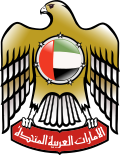We, the Rulers of the Emirates of Abu Dhabi, Dubai, Sharjah, Ajman, Umm Al-Quwain and Fujairah,
Whereas it is our will and the desire of the people of our Emirates to establish a Union between these Emirates, to promote a better life, more solid stability and a higher international status for the Emirates and their people;
Desiring to create closer links between the Arab Emirates in the form of an independent, sovereign, Federal state, capable of protecting its existence and the existence of its members, in co-operation with the sister Arab states and with all other friendly states that are members of the United Nations Organization and of the family of nations in general, on a basis of mutual respect and reciprocal interests and benefits;
Desiring also to lay the foundation for federal rule in the coming years on a sound basis, in line with the realities and the capacities of the Emirates at the present time, enabling the Union, giving free hand to the Union to achieve its objectives, sustaining the identity of its members providing that this is not inconsistent with those objectives and preparing the people of the Union at the same time for a dignified and free constitutional life, and progressing by steps towards a comprehensive, representative, democratic regime in an Islamic and Arab society free from fear and anxiety;
And whereas the realization of the foregoing is our dearest wish, towards which we have bent our strongest resolution, being desirous of advancing our country and our people to the status of qualifying them to take appropriate place among civilized states and nations;
Announce to Allah, the Supreme and Almighty, and to all the people our approval of the Constitution undersigned by us.*
—
Preamble, Constitution of the United Arab Emirates [5]


